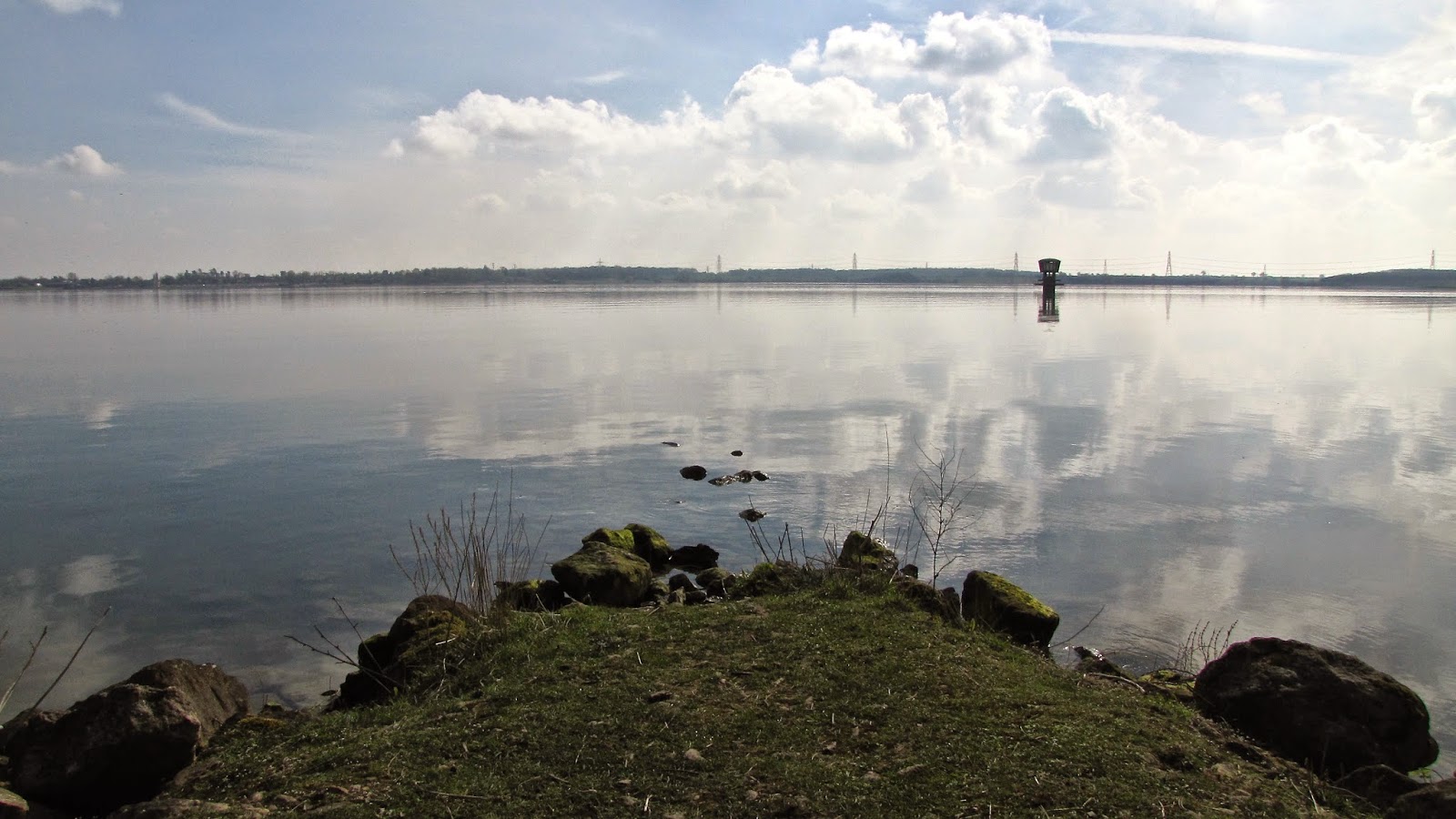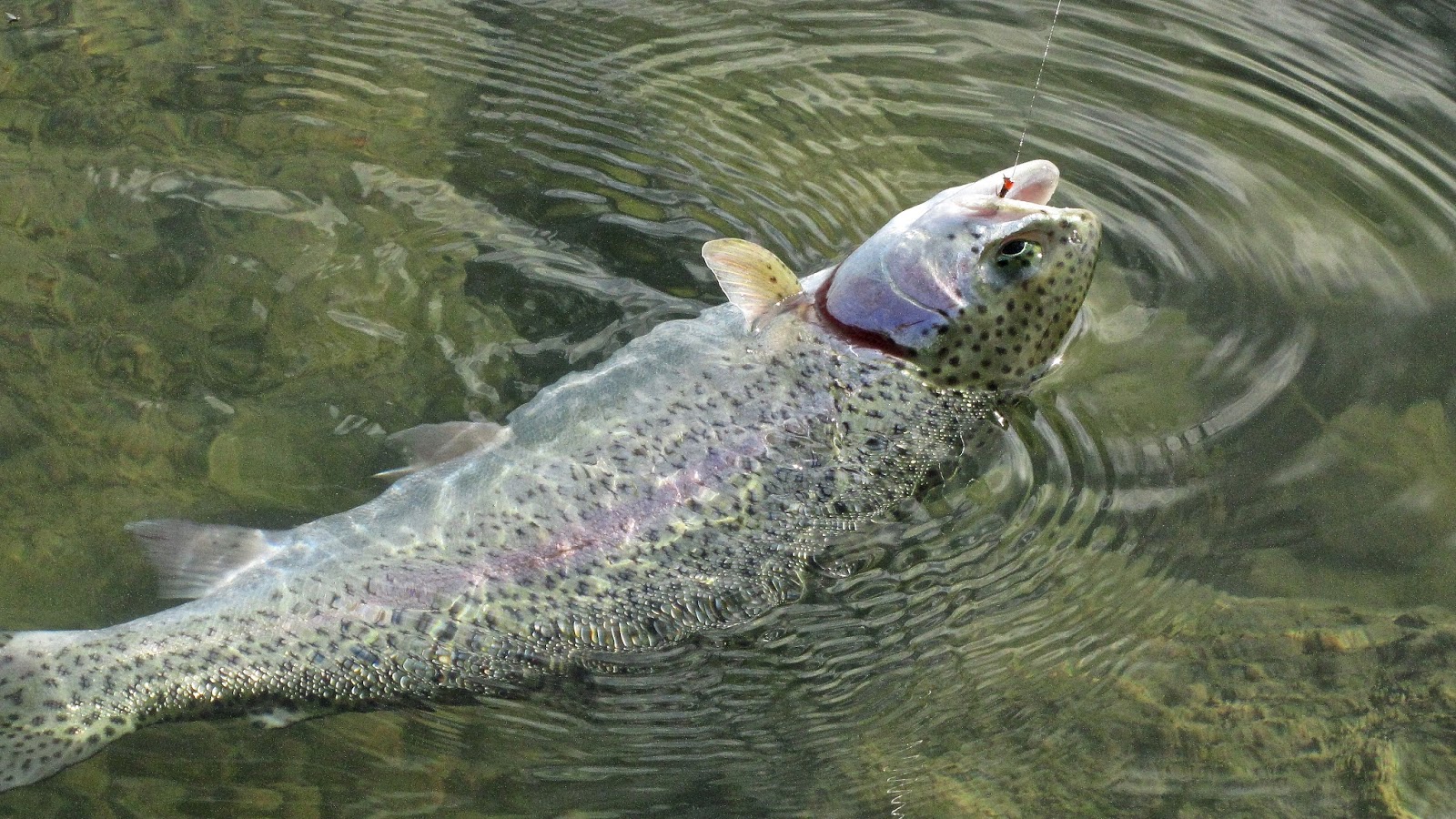 I like messing about in boats, but I really prefer to fish from the bank or, when the water warms up, by wading. This is a big disadvantage on reservoirs, which can be described as "huge holes in the ground, filled with water". It is the "filled with water" bit that creates the problems. Shore fishing is much easier if the water level is low and anglers can wade in the shallows but after all the rain we have had the reservoirs are mostly at "top level".
I like messing about in boats, but I really prefer to fish from the bank or, when the water warms up, by wading. This is a big disadvantage on reservoirs, which can be described as "huge holes in the ground, filled with water". It is the "filled with water" bit that creates the problems. Shore fishing is much easier if the water level is low and anglers can wade in the shallows but after all the rain we have had the reservoirs are mostly at "top level".Typically the banks will have been reinforced to prevent wave erosion, making them into walls that drop steeply into several feet of water. Until the level drops in summer, wading is impossible except in a few bays. At Grafham we always have the dam to fish off, but high water pushes the angler against the wall, which makes the back-cast tricky for us and dangerous for passing cyclists on top of the dam. In fact, public footpaths run close to the shore in many places so your choice of location is more limited than usual. There are a few stone groins and the harbour arms that can be closely contested spots at times like this. Boat fishing looks quite attractive even if it is more expensive than bank fishing.

Despite all that, I have not used a boat for several years, probably because I like to go walk-about or at least stand up all the time. I just cannot get used to the idea of fly-fishing while sitting down and anyway, I'm a skin-flint.
As might be expected, catches from the bank are erratic and you have to be happy with one fish on some days while on others there seems to be a fish on the end after every cast. You can talk about your skill and fly choice all you like, but I think the key to success is having a lot of fish in front of you and within reach of the shore, and that is largely down to luck.
 Reservoirs are usually stocked quite heavily with rainbow trout just before opening week. Those fish have been reared in tanks and small ponds so they are not used to open water. They mill around close to shore expecting a shower of pellets to be thrown at them regularly. They are easy pickings at this stage. I have stood in a line of anglers on the dam and watched the action move along the queue as the ball of fish rolls along the shoreline, giving each angler a window of opportunity to catch fish.
Reservoirs are usually stocked quite heavily with rainbow trout just before opening week. Those fish have been reared in tanks and small ponds so they are not used to open water. They mill around close to shore expecting a shower of pellets to be thrown at them regularly. They are easy pickings at this stage. I have stood in a line of anglers on the dam and watched the action move along the queue as the ball of fish rolls along the shoreline, giving each angler a window of opportunity to catch fish.As the season moves on the "stockies" disperse and move away from the shore. They get used to natural food and get more picky about what flies you throw at them and they can get very difficult to catch, even from a boat. Imaging a still day in July with algae in the water and clouds of daphnia that you cannot imitate. Coarse fish usually finish spawning in June and their fry grow quite quickly, but there is a stage when the tiny "pin-fry" are not much bigger than water fleas. Trout attack the clouds of food, often against a bank of week, feeding like baleen whales or whale-sharks. They do not pick a single target such as a fly but just lunge forward with their mouths agape to suck up what is basically plankton.

To almost complete the story, bank fishing picks up again in autumn when the fry get large and the biggest trout herd them into bays and against rocks to slaughter them. Fishing a fry imitation from the shore is great fun at the back-end of the year, if you can keep warm.
Recent seasons have differed from the traditional pattern described above because of a massive increase in shrimp numbers that becomes apparent in summer. "Killer shrimps" have invaded some of our waters and they proliferate in the shallows, especially where there are stones rather than mud. Trout just love them and can be caught around your feet in just a few inches of water in July and August when fishing used to be almost impossible. September can be the best month to fish if you use a shrimp imitation in the right spot.

That's all to come this year. I have only been out twice so far.
My first session in March was from the harbour arm when I found that the only way to take fish was on a sinking line with a green lure. I much prefer to drift a stream of nymphs on a floating line, but is simply didn't work four me on that day. Some of the boat anglers were catching fish on buzzers though, but I was in deep water.
In April I had a chance to get on the water on a bright, still day. What you really want is a mild, overcast day with a slight breeze to stir the surface and help with your cast, but it was just too nice a day to stay indoors. I knew it was going to be a special day when I got a pluck on my first and second casts, when I was just getting the tackle sorted out. Once I worked out a decent length of line I picked up fish all the time. I was using pheasant-tail nymphs but anything that looked like a fly would work. Midges and caddis flies were hatching and getting stuck in the surface film because there was no ripple. A few fish were hitting flies on the surface, but most of the action was a foot or so down.
As I packed up to go, I saw an elderly (more elderly than me) gentleman fishing in a less favoured spot. He was sitting on a rock and making rather feeble casts because there was a big bramble bush behind him. I suggested that he took the place that I vacated but he explained that he had a bad back and needed to sit down. Anyway, he was catching plenty of fish by being stealthy and persistent. So maybe you can fish anywhere, if you have the skill.

No comments:
Post a Comment